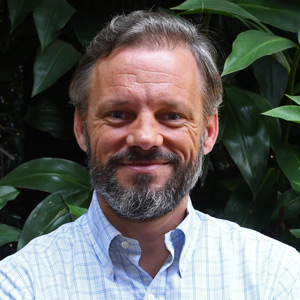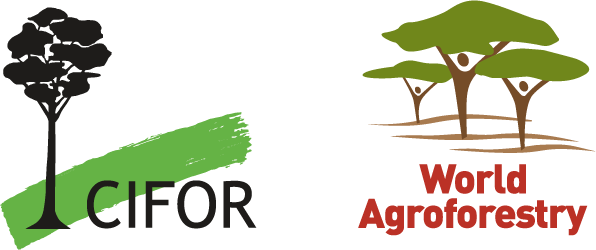
The Regenerative Agriculture for Conservation of the Amazon (ARCA in its Portuguese acronym) Program will promote Nature-Based Solutions (NBS) in buffer zones around conservation units, Indigenous lands, quilombolas and land reform settlements in seven territories in three of Brazil’s Amazonian states.
Launched in October 2023, this four-year program led by CIFOR-ICRAF is funded by the United States Agency for International Development (USAID).
The territories where the ARCA Program works directly are the northeast and southeast of the state of Pará; the Portal da Amazônia and Alto Xingu, in Mato Grosso; and the Mosaic of Gurupi, Médio Mearim and Itapecuru Valley, in Maranhão. All are located in the Brazilian Amazon’s Arc of Deforestation.
ARCA’s aim is to promote rural development, biodiversity conservation and the socio-environmental resilience of traditional communities through capacity building, collaboration, and innovation, for the adoption and spread of regenerative practices and context-sensitive solutions, while also strengthening inclusive participation, access to resources and markets and the gathering of evidence to guide policies and investments.
The program will be carried out in the territories by four of CIFOR-ICRAF’s strategic partners – Instituto Socioambiental (ISA), Instituto Sociedade População e Natureza (ISPN), Instituto Ouro Verde (IOV) and The Nature Conservancy (TNC) Brasil.
The strategic partners will do capacity building with local partners and take part in governance forums in their respective territories. They will also manage small projects run by partners and grassroots organizations, and collaborate in the joint design of technological solutions, territorial planning processes and proposals for public policy making.
Contact us

Julio Sampaio
Intended impact
Adoption by farmers and traditional communities of biodiverse agroforestry systems, ecological restoration, and sustainable forest management of non-timber products (Nature-Based Solutions) in the priority territories, on a scale large enough to recover the environment and reduce pressures for deforestation and degradation.
Equitable business models and socio-environmental safeguards in place in the territories, reducing risks and enhancing conditions for communities, investors, and private-sector buyers.
Public policy processes at sub-national and national levels emerging from action research, capacity building and participatory territorial management by traditional communities, Indigenous Peoples and quilombolas, together with rural support agencies and governmental bodies.
Specific objectives

Strengthen capacities in innovative tools, approaches, and techniques for the co-construction, innovation, and adoption of regenerative agriculture adapted to local social, biophysical, market and political contexts

Support the development of Nature-Based Solutions through a network of demonstration units and micro-projects focused on grassroots organizations and traditional communities

Strengthen the capacities of women and young people to play greater roles in decision-making on sustainable rural development alternatives

Provide methodological and logistical support to strengthen or create participatory forums on land use and natural-resource management

Carry out research and diagnostics on degradation factors, dynamics of value chains, and local innovation in NBS and regenerative agriculture, gathering evidence to produce know-how and learning cycles for public policy making

Support market access for traditional communities and groups of family farmers, develop their social and environmental safeguards and inclusive business models, and attract sustainable private sector investments
ARCA CIFOR-ICRAF team

Alison Castilho

Denyse Mello
The ARCA Program’s Sustainable Development Goals (SDGs)
![]()
1
No Poverty
![]()
2
Zero Hunger and Sustainable Agriculture
![]()
5
Gender Equality
![]()
10
Reduced Inequalities
![]()
12
Responsible Consumption and Production
![]()
15
Life on Land
Statements
Concepts
Regenerative agriculture is an agricultural production system that aims to improve ecosystem health while promoting the resilience and sustainability of farming communities. This agricultural model focuses on regenerating natural resources, such as soil, water, and biodiversity, while also seeking to increase productivity and income for farmers. – Regenerative agriculture to value water and soils.
“Nature-based solutions address societal challenges through actions to protect, sustainably manage and restore natural and modified ecosystems, while benefiting people and nature. They address important challenges such as climate change, disaster risk reduction, food and water security, biodiversity loss and human health, and are key to sustainable development” – IUCN (International Union for Conservation of Nature).

Agroforestry systems
“Systems based on the dynamics, ecology and management of natural resources that, through the integration of trees on the property and in the agricultural landscape, diversify and sustain production with greater social, economic and environmental benefits for all those who use the soil at various scales” – JOSE, S. Agroforestry for ecosystem services and environmental benefits: An overview. Agroforestry Systems, v. 76, p. 1 – 10, 2009.

Ecological restoration
“The process of assisting in the recovery of an ecosystem that has been degraded, damaged or destroyed to a recovery trajectory that allows adaptation to local and global changes, as well as the persistence and evolution of its constituent species” – SER, 2019. International principles and standards for the practice of ecological restoration. Second edition: November 2019. Society for Ecological Restoration, Washington, D.C. 20005 U.S.A. Restoration Ecology 27(S1): S1–S46, 201.






















